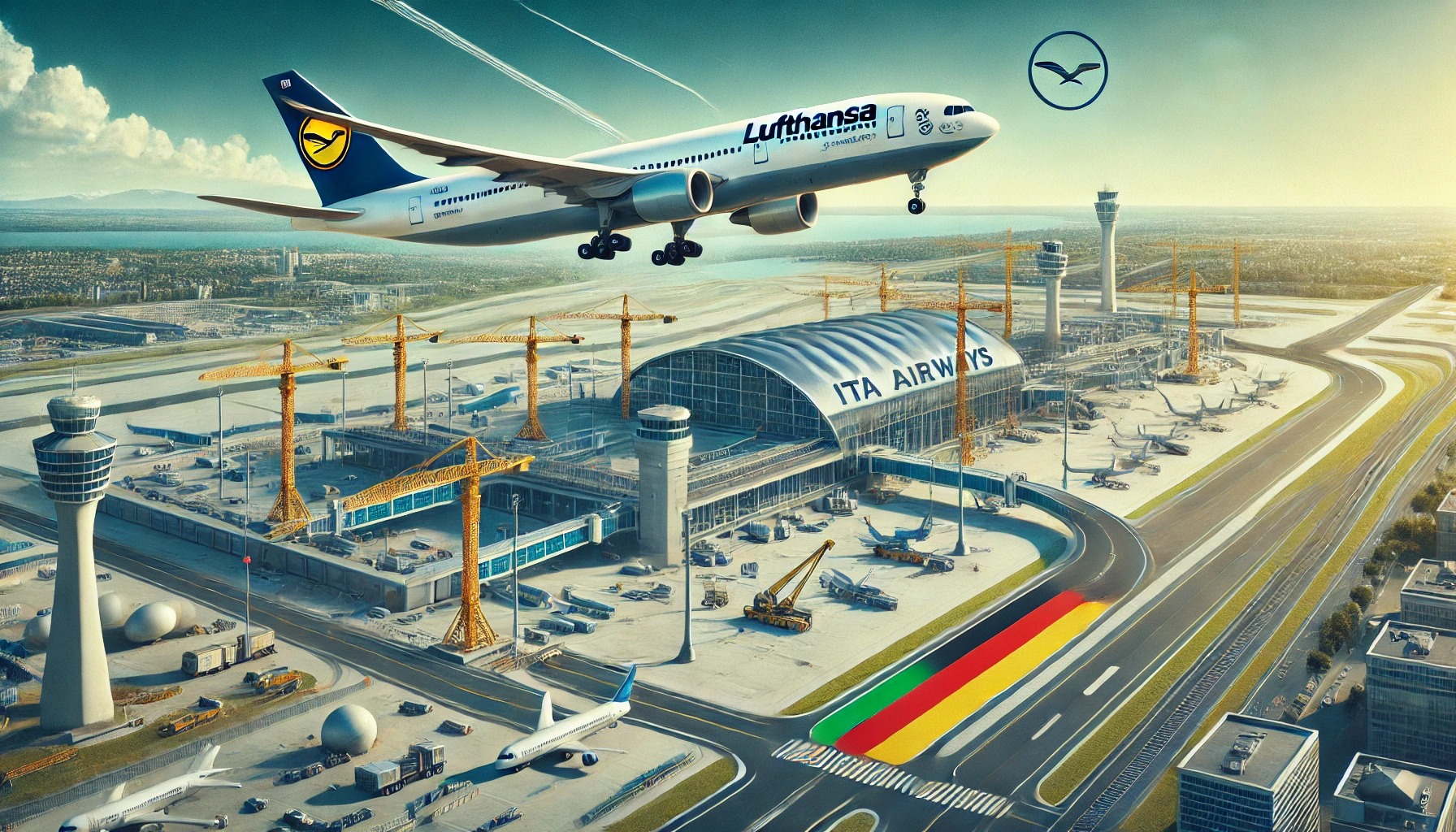Lufthansa’s Strategic Turnaround with ITA Airways: Key Role of Rome Fiumicino Airport Expansion
Lufthansa's highly anticipated transformation of ITA Airways, a crucial part of reviving the German airline's global standing, hinges on the ambitious expansion of Rome’s Fiumicino Airport. This development is vital to meet future international demands, helping the carrier expand beyond European borders.
ITA Airways and Lufthansa’s Growth Strategy
Facing challenges like high costs and delays in Boeing aircraft deliveries, Lufthansa's CEO Carsten Spohr emphasized on October 1st that international expansion—supported by the 41% stake acquisition in ITA Airways—would significantly bolster the airline's recovery.
The Connection Between Fiumicino’s Expansion and ITA’s Growth
However, the future success of ITA Airways is tied to Fiumicino Airport’s ability to expand. Currently, ENAC, Italy’s airport regulator, has yet to approve Fiumicino's proposal to double its passenger capacity to 100 million annually by adding a third terminal and additional runways.
Spohr highlighted the potential of Fiumicino Airport, noting its capability for growth as a major European hub. “Fiumicino has both the terminal and runway space for future development,” Spohr said, underscoring its strategic role as a gateway to Africa and Latin America.
Expanding Rome’s Fiumicino: Key to Lufthansa's Vision
The airport is managed by Aeroporti di Roma (ADR), owned by the Benetton family and Blackstone. ADR submitted an €8 billion development plan in 2021, which is still under review by ENAC. While some analysts question Rome’s suitability as a Latin American hub compared to competitors like Portugal's TAP or Spain's Air Europa, Lufthansa remains committed to its strategy.
Opportunities and Challenges at Fiumicino Airport
Despite concerns, experts like Federico Maria Alberto Caligaris from CDI Global support the focus on Fiumicino due to growth constraints at Lufthansa’s other European hubs. Andrea Giuricin, CEO of TRA Consulting, predicts that Fiumicino, which already saw over 40 million passengers in 2023, will exceed 50 million in 2024 thanks to robust intercontinental and tourist traffic to Rome.
Fiumicino’s competitive advantage lies in its cost efficiency. Operating costs at the airport amount to just 60% of its revenue, compared to higher rates in Frankfurt, making it an attractive hub for intercontinental flights.
Enhancing Travel Experience and Connectivity
Fiumicino’s modern appeal includes unique features like art exhibits showcasing ancient Roman history in the new boarding area opened in 2022. The airport earned the title of Europe's best airport from the Airports Council International last year.
Despite these accolades, travelers like Felipe Paiva, a Brazilian tourist, feel more could be done. "The airport is good but could be larger for a city like Rome. The transport to the city also needs improvement," Paiva remarked, reflecting the general sentiment on the need for better connectivity to central Rome.
Lufthansa's Strategic Bet: ITA Airways and Rome’s Future
While Lufthansa’s investment in ITA Airways aligns with its broader international expansion goals, challenges persist. Rising labor costs and the delayed expansion of Fiumicino are significant factors to monitor. Additionally, some analysts like Ingo Speich of Deka Investment express concerns over the execution risks in Lufthansa's grand plan.
Milan's Malpensa Airport is another potential competitor. Its proximity to Lufthansa’s German hubs in Frankfurt and Munich could impact its future significance, even if Rome Fiumicino grows.
Lufthansa’s Commitment to ITA Airways and Rome Fiumicino
Lufthansa’s stake in ITA Airways and its reliance on Rome Fiumicino's expansion reflect its commitment to expanding its global footprint. As ENAC reviews Fiumicino’s ambitious expansion plan, Lufthansa’s long-term success in Italy depends on the smooth implementation of these initiatives, opening new doors to Latin America and Africa.
Lufthansa’s vision for ITA Airways represents an opportunity to redefine its presence in southern Europe, with Fiumicino serving as a key link to emerging global markets.



 China Vows Retaliation as Trump Imposes Sweeping Tariffs on Global Trade
China Vows Retaliation as Trump Imposes Sweeping Tariffs on Global Trade  US Stock Futures Tumble as Trump Unveils Aggressive Tariffs
US Stock Futures Tumble as Trump Unveils Aggressive Tariffs  Conservative Legal Group Challenges Trump’s New China Tariffs in Federal Court
Conservative Legal Group Challenges Trump’s New China Tariffs in Federal Court  Indian Rupee Eyes US Tariff Move as Bond Yields Slide Ahead of RBI Policy
Indian Rupee Eyes US Tariff Move as Bond Yields Slide Ahead of RBI Policy  South Korea Scrambles to Mitigate Impact of Harsh U.S. Tariffs on Exports
South Korea Scrambles to Mitigate Impact of Harsh U.S. Tariffs on Exports  Japanese Stocks Tumble Amid Trump Tariffs, Nikkei Faces Worst Week Since 2020
Japanese Stocks Tumble Amid Trump Tariffs, Nikkei Faces Worst Week Since 2020  Global Markets Rattle as Trump Unveils Sweeping New Tariffs
Global Markets Rattle as Trump Unveils Sweeping New Tariffs  BOJ Signals Possible Rate Hikes Amid U.S. Tariff Concerns
BOJ Signals Possible Rate Hikes Amid U.S. Tariff Concerns  Singapore Criticizes U.S. Tariffs Despite Free-Trade Deal
Singapore Criticizes U.S. Tariffs Despite Free-Trade Deal  Trump Imposes 10% Reciprocal Tariffs, Targets China and EU
Trump Imposes 10% Reciprocal Tariffs, Targets China and EU  Wall Street Slumps as Trump Tariffs Fuel Recession Fears
Wall Street Slumps as Trump Tariffs Fuel Recession Fears  Dollar Slips as Tariff Tensions Rise, Markets Eye Jobs Report and Fed Speech
Dollar Slips as Tariff Tensions Rise, Markets Eye Jobs Report and Fed Speech  Mexico Cuts 2025 Growth Forecast Amid Recession Concerns
Mexico Cuts 2025 Growth Forecast Amid Recession Concerns 





























